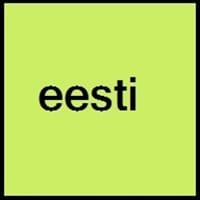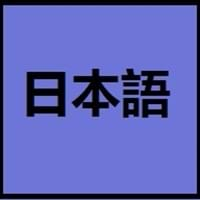Estonian and Japanese
Countries
Estonia, European Union
Japan
National Language
Estonia, Gambia
Japan
Second Language
Not spoken in any of the countries
Not spoken in any of the countries
Speaking Continents
Europe
Asia, Pacific
Minority Language
Denmark, Russia, Sweden
Palau
Regulated By
Institute of the Estonian Language
Agency for Cultural Affairs (文化庁) at the Ministry of Education
Interesting Facts
- Estonian language is considered to be powerful symbol of Estonian identity and culture.
- Estonian language has adopted many words with Finnish language.
- In Japanese Language, there are 4 different ways to address people: kun, chan, san and sama.
- There are many words in Japanese language which end with vowel letter, which determines the structure and rhythm of Japanese.
Similar To
Finnish
Korean Language
Derived From
Not Available
Not Available
Alphabets in
Estonian-Alphabets.jpg#200
Japanese-Alphabets.jpg#200
Writing Direction
Left-To-Right, Horizontal
Left-To-Right, Horizontal, Top-To-Bottom
Hello
Tere
こんにちは (Kon'nichiwa)
Thank You
aitäh
ありがとう (Arigatō)
How Are You?
kuidas sul läheb
お元気ですか (O genki desu ka?)
Good Night
Head ööd
おやすみなさい (Oyasuminasai)
Good Evening
Tere õhtust
こんばんは (Konbanwa)
Good Afternoon
Tere päevast
こんにちは (Konnichiwa!)
Good Morning
Tere hommikust
おはよう (Ohayō)
Please
Palun
お願いします (Onegaishimasu)
Sorry
Vabandust
ごめんなさい (Gomen'nasai)
Bye
Head aega
さようなら (Sayōnara)
I Love You
ma armastan sind
愛しています (Aishiteimasu)
Excuse Me
Vabandage
すみません (Sumimasen)
Dialect 1
Keskmurre
Sanuki
Where They Speak
Gabon, Northeastern coast of Estonia
Kagawa
How Many People Speak
Not Available
Where They Speak
Georgia, South Estonia
Fukuoka
Dialect 3
Idamurre
Kansai
Where They Speak
France, Northwestern shore of Lake Peipsi.
kansai
Speaking Population
Not Available
Native Name
eesti keel
日本語
Alternative Names
Eesti keel
Not Available
French Name
estonien
japonais
German Name
Estnisch
Japanisch
Pronunciation
Not Available
/nihoɴɡo/: [nihõŋɡo], [nihõŋŋo]
Ethnicity
Estonians
Japanese (Yamato)
Language Family
Uralic Family
Japonic Family
Subgroup
Finno-Ugric
Not Available
Branch
Finnic
Not Available
Early Forms
No early forms
Old Japanese, Early Middle Japanese, Late Middle Japanese and Early Modern Japanese
Standard Forms
Estonian
Japanese
Language Position
Not Available
Signed Forms
Estonian Sign Language
Signed Japanese
Scope
Macrolanguage
Individual
ISO 639 6
Not Available
Not Available
Glottocode
esto1258
nucl1643
Linguasphere
No data available
45-CAA-a
Language Type
Living
Living
Language Linguistic Typology
Subject-Verb-Object
Subject-Object-Verb
Language Morphological Typology
Agglutinative
Agglutinative, Synthetic
All Estonian and Japanese Dialects
Most languages have dialects where each dialect differ from other dialect with respect to grammar and vocabulary. Here you will get to know all Estonian and Japanese dialects. Various dialects of Estonian and Japanese language differ in their pronunciations and words. Dialects of Estonian are spoken in different Estonian Speaking Countries whereas Japanese Dialects are spoken in different Japanese speaking countries. Also the number of people speaking Estonian vs Japanese Dialects varies from few thousands to many millions. Some of the Estonian dialects include: Keskmurre, Tartu. Japanese dialects include: Sanuki , Hakata. Also learn about dialects in South American Languages and North American Languages.
Estonian and Japanese Speaking population
Estonian and Japanese speaking population is one of the factors based on which Estonian and Japanese languages can be compared. The total count of Estonian and Japanese Speaking population in percentage is also given. The percentage of people speaking Estonian language is Not Available whereas the percentage of people speaking Japanese language is 1.90 %. When we compare the speaking population of any two languages we get to know which of two languages is more popular. Find more details about how many people speak Estonian and Japanese on Estonian vs Japanese where you will get native speakers, speaking population in percentage and native names.
Estonian and Japanese Language Codes
Estonian and Japanese language codes are used in those applications where using language names are tedious. Estonian and Japanese Language Codes include all the international language codes, glottocodes and linguasphere.





